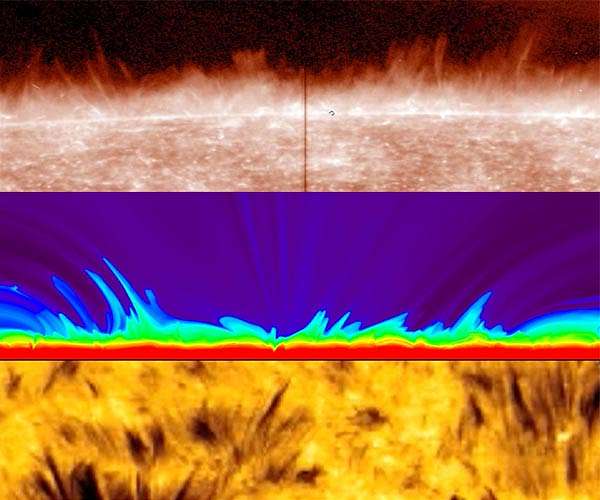UAH plasma researcher investigates key factors in solar corona warming via Alfven Waves
Syed Ayaz, a researcher at the University of Alabama in Huntsville (UAH), has published a study in ‘Scientific Reports’ that builds on his groundbreaking research into kinetic Alfven waves (KAW) as a possible explanation for why the solar corona, the solar radiation’s outer layer of the atmosphere, is much hotter than the surface of the sun. This latest research deepens the understanding of these electromagnetic waves and their role in the distribution of solar energy, essential for heliophysics.
Ayaz, a graduate research assistant at UAH’s Center for Space Plasma and Aeronomic Research (CSPAR), highlighted the focus of his new work: “In our previous study, we investigated wave-particle interactions using kinetic Alfven waves in plasmas. Crucial aspects such as energy distribution , net particle resonance velocity and the damping length of KAWs have not been previously addressed.”
Kinetic Alfven waves are oscillations in the charged particles and magnetic fields in solar plasma, originating from movements in the Sun’s photosphere. The damping process occurs when charged particles absorb energy from electric wave fields, heating the plasma over distances.
“This study addressed these previously undiscovered issues,” Ayaz explained. “We verified our findings using data from NASA’s Parker Solar Probe and the European Space Agency’s Solar Orbiter, which confirmed our theoretical results. This is the first study to study these effects in non-thermal plasma, advancing our understanding of CAW behavior in solar energy is increased.” corona and solar wind.”
Meaning of group speed
A crucial aspect of Ayaz’s research is the ‘group velocity’, the speed at which wave energy moves through a medium. Understanding this speed will allow researchers to investigate how KAWs transport energy through the solar corona and solar wind.
“When particles gain energy from KAWs, determining their subsequent velocity – or resonance rate – is critical,” Ayaz said. “This insight helps researchers understand how particle acceleration affects the energy flow in space plasmas. Our study derives the analytical expressions for this net resonance velocity, providing a way to quantify particle acceleration.”
The research also defines the damping length of KAWs, shedding light on how far these waves can transfer energy before being damped, which is important for understanding energy transfer efficiency in space plasmas.
Breakthrough in space plasma studies
Ayaz emphasized that understanding the net resonance velocity of particles is critical because it quantifies how they absorb energy from KAWs and how their motion changes in response. “We have provided generalized analytical expressions that provide a robust framework for understanding these acceleration mechanisms in non-thermal plasmas,” he said. “This insight is applicable to both small-scale and large-scale plasma dynamics in the solar corona and solar wind.”
Dr. Gary Zank, Aerojet/Rocketdyne Chair in Space Science and CSPAR director, praised Ayaz’s work: “Syed has delved into how ions, especially protons, are heated by small-scale magnetic fluctuations. This study clarifies how KAW’s magnetic converting energy into heat, a process that was not well understood until now.”
Ayaz’s findings pave the way for further research aimed at dissecting the complex behavior in space-based plasma environments. “These derived expressions are extremely valuable to the scientific community, especially to data simulation experts,” Ayaz said. “Incorporating these formulas into computer models will refine simulations of wave-particle interactions and improve space weather forecasting. This underlines the broad applicability of our research to theoretical and computational astrophysics.”
Research report:Alfven waves in the solar corona: resonance velocity, damping length and acceleration of charged particles by kinetic Alfven waves


